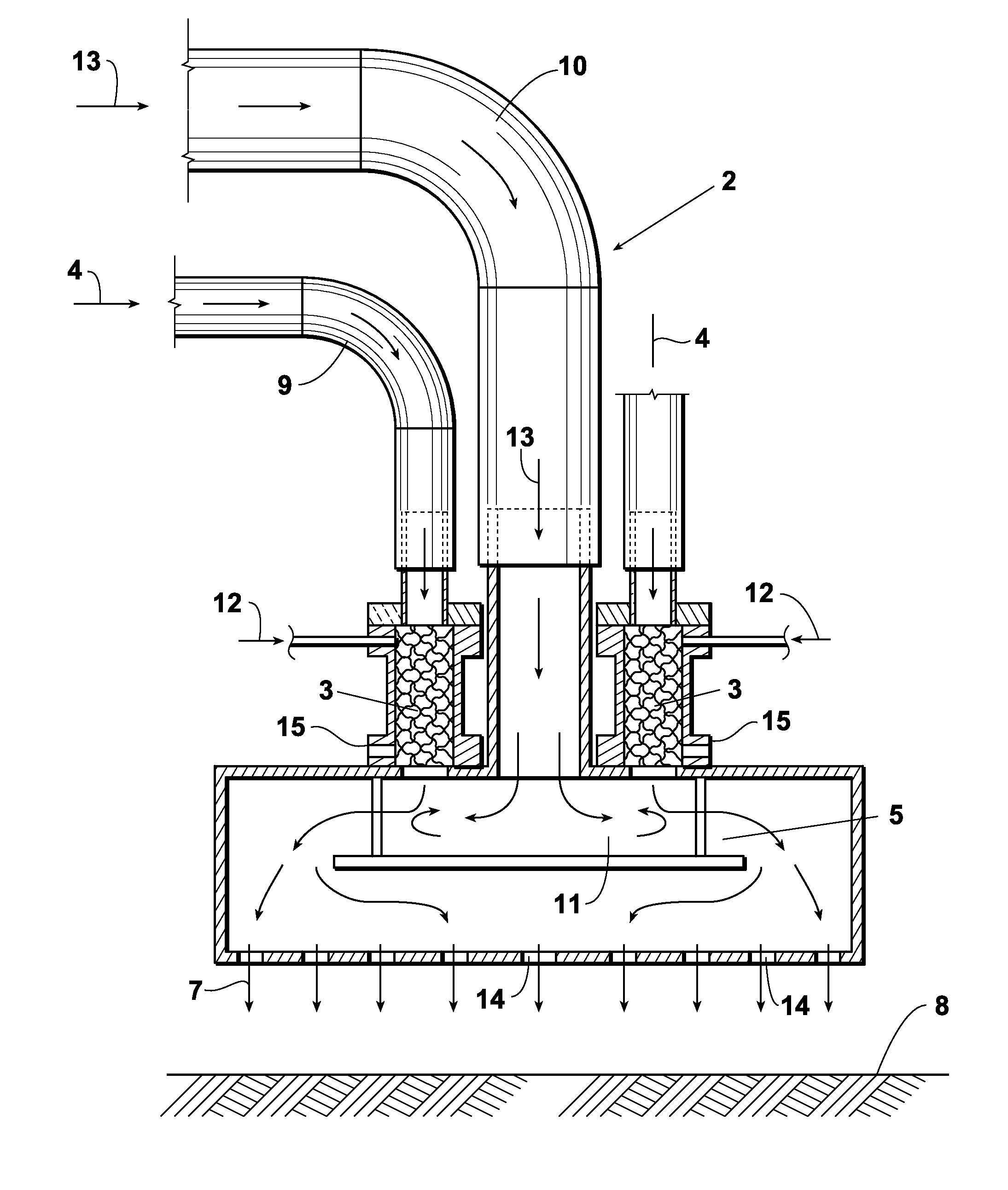Engine Exhaust-Driven Heating Device for Use in Portable Surface Drying Equipment
a heating device and engine technology, applied in the direction of machines/engines, lighting and heating apparatus, furniture, etc., can solve the problems of inability to move or carry, inability to access, and inability to carry out commercial tasks for indefinite periods, so as to reduce atmospheric emissions, improve the effect of drying surface moisture, and reliable and continuous heat sour
- Summary
- Abstract
- Description
- Claims
- Application Information
AI Technical Summary
Benefits of technology
Problems solved by technology
Method used
Image
Examples
Embodiment Construction
[0033]Referring to FIGS. 1 to 3, preferred embodiments of an engine exhaust-driven heating device include a dual catalytic heater plenum 1 arrangement (see FIG. 1) and a multiple catalytic heater plenum 2 arrangement (see FIGS. 2 & 3). In each embodiment, a catalytic chamber 15, which is in communication with an exhaust piping 9 of an engine (not shown), houses a catalyst 3 through which an exhaust stream 4 is passed. The exhaust stream 4, which is preferably from an air-cooled, gasoline-fueled engine, can be mixed ahead of catalyst 3 with a secondary stream of pressurized air 12 (preferably at approximately 1 psi). An ambient air stream 13 from a blower (not shown) passes through blower tubing 10.
[0034]The two streams—ambient air stream 13 and either catalytic treated exhaust stream 4 or catalytic treated exhaust stream 4 with pressurized air stream 12—meet in baffled mixing chamber 5 as combined stream 11 where additional reaction occurs, breaking down remaining constituents in th...
PUM
 Login to View More
Login to View More Abstract
Description
Claims
Application Information
 Login to View More
Login to View More - R&D
- Intellectual Property
- Life Sciences
- Materials
- Tech Scout
- Unparalleled Data Quality
- Higher Quality Content
- 60% Fewer Hallucinations
Browse by: Latest US Patents, China's latest patents, Technical Efficacy Thesaurus, Application Domain, Technology Topic, Popular Technical Reports.
© 2025 PatSnap. All rights reserved.Legal|Privacy policy|Modern Slavery Act Transparency Statement|Sitemap|About US| Contact US: help@patsnap.com



